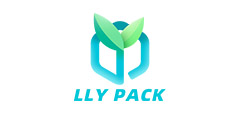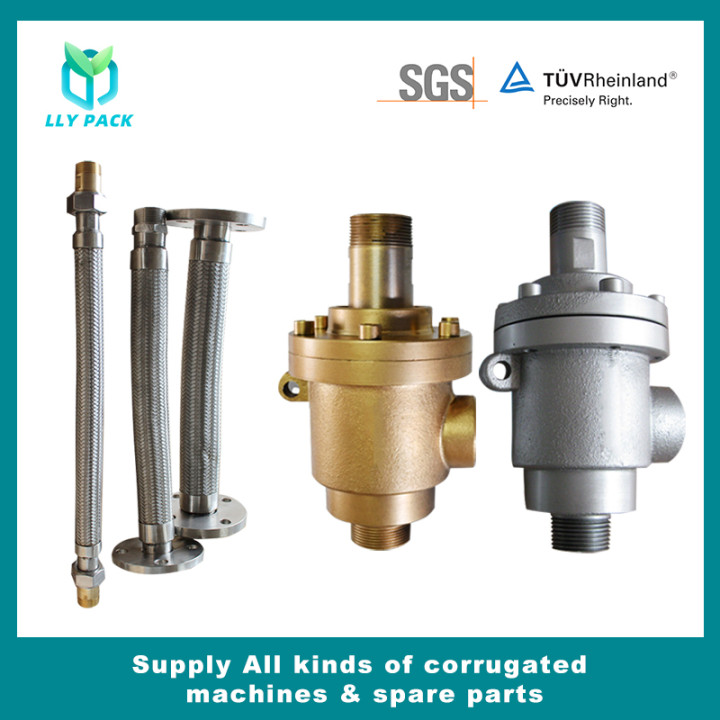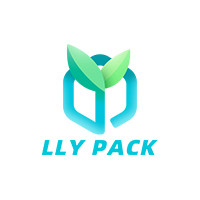The factors affecting the quality of corrugated board printing include plate making, equipment, materials, technology, and environment.
1. Prepress processing
First of all, the original design should pay attention to the accurate use of color. For the packaging design of corrugated board flexographic printing, in the use of color, one must create various types of works that are elegant, or bold, or warm, or have a strong visual impact; Second, try to reduce the number of printing colors as much as possible. Reduce the number of overprints. The more the number of registrations, the more severe the compressive strength of the corrugated board decreases.
Second, pay attention to the application of levels. The style of packaging design, some of the pursuit of simple and neat, some rich in the pursuit of the level. Because the flexible version body is highly flexible and easily deformed, the dot expansion after pressing is more serious. In the process of plate making, 1% or 2% of small dots are easily lost during washing. During the printing process, 3% of the dots tend to expand to about 10%. It is impossible to achieve a gradual change from 0 to 100% or a very soft layer. Effect. Therefore, the level of highlights and shades that can be expressed by flexographic products is relatively small, and those with better printed products can only reproduce 8% to 10% of the dots.
In image design and production, it is best to use vector software for lines, text, and color blocks to process images or create some special effects. You can use Photoshop and other pixel-based software.
2. Select the appropriate media
At present, the photosensitive resin plate is generally used, and the thickness is 2.84mm, 3.94mm, 7.00mm, and the like. Conventional flexo printing is commonly used for 7.00mm thick printing plates. When the pressure is too high during printing, the printed substrate is easily deformed or even damaged. At the same time, the resin plate is deformed and the dots are expanded. When the printing pressure is too low, the printed substrate is likely to produce bad clothes. Board failures affect the field and fine lines. With 3.94mm thick thin plate and 3.06mm thick air cushion lining (Shore hardness 20 ~ 25), not only can reduce the deformation of the printing plate, printing quality has been greatly improved, but also can reduce the plate and plate making costs .
Today thin plate technology is becoming more and more popular in flexo printing of middle and high grade corrugated cardboard. When using thin plates, pay attention to the choice of pads. The liner has a plastic foam liner, rubber liner (also with or without PE base film) and R/bak air cushion liner.
R/bak lining is a kind of polyurethane type material, its flexibility is 2 to 10 times higher than that of resin or rubber, and it has the advantages of high elasticity, no deformation, and quick recovery under pressure. It is the most widely used type of liner material in corrugated board printing. It can significantly improve the printing quality. It is suitable for fine pattern printing and is gradually replacing thick printing.
3. Note the selection of anilox roller
Because the flexographic printing is transmitted through the anilox roller, the quality of the anilox roller and the number of lines determine the amount of ink transferred and the fineness of printing. In general, the screen adjustment requires the use of high-line anilox rollers to make the dots clear; while the field version uses low-line anilox rollers to achieve color saturation. For example, there are both halftone images and the actual field. Usually, a certain color is made into halftone version and field version, respectively, to facilitate the printing operation. If a large area is connected with a partial gradient, an anilox roller with a moderate number of lines may be selected. Choosing the number of anilox roller lines also needs to be matched with the number of screen lines to avoid or reduce the possibility of moiré. In addition, in the packaging design, many times, gold ink, silver ink, etc. are used to enrich the packaging design effect and improve the packaging quality. In the use of gold ink, silver ink, if the pattern contains a halftone, it is best to leave some space in the high light and dark tone, high light at the best network of more than 20%, because this type of ink printing dot is easy to paste version.
4. Select high-quality aqueous ink
The pros and cons of water-based inks are the key to ensure the genuine and bright color of corrugated board printing.
The selected aqueous ink requires that the hue and viscosity of the batches are basically the same. High-quality inks are delicate in feel, sticky and suitable in concentration. No precipitation or agglomeration occurs when water or alcohol solvent is diluted. No foam is produced during mixing. The affinity is good when mixed with other aqueous inks, and there is no abnormal reaction. However, it should be noted that water-based inks should not be mixed with alcoholic inks or solvent-based inks, or organic solvents should be added to water-based inks to avoid causing print failures and affecting the print quality.
It is necessary to pay attention to the measurement of ink viscosity in use, neither too high nor too low. Pay attention to changes in pH. Because in the printing process, due to the volatilization of water, it will cause the viscosity of the aqueous ink to increase and the pH value will drop. The pH should be controlled between 8.5 and 9.5. If it exceeds this range, the pH stabilizer can be used to adjust the viscosity. When it is slightly larger, appropriate amount of water can be added for adjustment. In the course of use, if there is more foam in the ink, a small amount of defoamer may be added, and the added amount is generally controlled within 0.2% of the ink volume. In addition, before use, pay attention to ink adhesion, abrasion resistance, water resistance and drying. The choice of these properties depends on the use of the corrugated paper. For example, for the packaging of frozen products, aquatic products or canned beverages, inks with strong adhesion, quick drying, and water-repellent deinking should be selected.
5. Ensure printing accuracy, control printing pressure
The overlay accuracy depends first of all on the accuracy of the flexographic printer and the parallelism of the paper feeding section to push the paperboard. Furthermore, it is the layout accuracy (here, no gradation compression and reduction problems are involved), the loading and correction. After the printing plate is ready, a 0.5mm thick transparent polypropylene film base can be taken, and a straight line can be drawn at the center of its length to cover the printing plate. The watermark can be drawn along the edges of the printing plate to accurately trace all the edge lines (such as overprinting three lines. The color can be painted again). Finally, press the cover printing color to stick the corresponding printing plate in the painted position. Then use the double-sided adhesive to attach the printing plate to the cylinder of the printing machine. The middle line of the printing plate and the printing machine are installed. The correct alignment of the center of the platen roller ensures accurate overprinting.
In the flexo printing of corrugated board, it is necessary to pursue the exquisiteness of the pattern, but also to consider the difficulty of printing. Such as small text and pattern, if overprinting, due to overprinting accuracy is not ideal, it is bound to cause unsightly printing patterns and increase the scrap rate, generally trapped to solve this problem. The trapping of corrugated cardboard is usually 0.5 to 1mm. Complementary colors are difficult to overprint, and there are obvious black edges at the intersection of two colors, which affects the aesthetics of packaging. Relatively speaking, dark and light-colored overprints will be much better.
6. Note the clarity of printed graphics
The clarity of printed graphics is one of the most intuitive print quality. To ensure the clarity of printed graphics, we must first choose a medium that is wear-resistant, moderately elastic, and of good quality. Whether it is a plate printed with a negative film or a plate with a manual knife, the pattern and line depth on the plate should not be less than 3mm. The arc should be round and the straight line should be straight. When printing, the ink should be properly lightened, the ink layer should not be too thick, and the pressure should be moderately stable (no obvious dent marks on the surface paper). The speed of the printing press should generally be controlled to be higher than 800r/min. It is too low. The ink on the surface paper is uneven and will be exposed. If it is too fast, the ink will be too thick and the layout will be blurred. At the same time, it is also necessary to prevent paper, paper, etc. from entering the printing press and sticking to the printing plate. If any, it should be stopped, wiped and reprinted.
7. Note the impact of full-printing on carton strength
When the corrugated board is printed, the paperboard is formed by passing the paper guide roller and the printing roller on the printing machine to the grooved portion. In the transfer process, the cardboard is deformed to a different degree by the pressure of the roller, which will inevitably affect the strength of the carton in the future, and is particularly prominent in full-printing. Carton of the same material, after printing, compared with before, its strength should be reduced by about 30%. Therefore, in the production process, generally three measures can be taken to alleviate this problem. First, the gaps of the paper guide rollers of the printing press are adjusted appropriately to be slightly smaller than the paperboard thickness of 0.1 to 0.15 mm, so that the paper boards to be printed can pass without deformation. should. Secondly, attention should be paid to adjusting the printing pressure so that the pressure of the printing plate can meet the requirements of clear printing. Thirdly, the speed of the printing press (1000 r/min or more) can be appropriately increased, so that the paper board can pass through the printing press as soon as possible, and the time for pressing the paper board can be reduced.
8. Note the handling of some issues in printing
In the direct printing of corrugated board flexo printing, the problems often encountered include: printing plate graphic expansion, line roughening, incapable of covering the background color in the overlay printing, and the printing product presents many holes such as pinholes. The surface paper is printed in a fuzzy manner, the surface of the paperboard is indented, the surface of the print is powdery and easy to fade, and the surface of the paperboard is fluffed. To solve these problems, either by adjusting the viscosity of the ink, or by controlling the pressure, or adjusting the gap of the paper feed roller, or cleaning, etc., the paperboard can be replaced separately.











